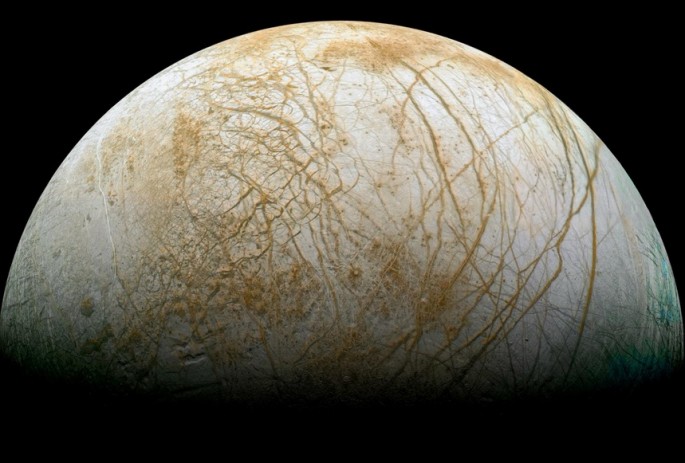NASA has selected nine science instruments on Tuesday where it will be utilized to hunt for signs of life in Jupiter's moon Europa where scientists believe that its massive ocean contains life.
This special suite of instruments includes not only cameras but also heat mapping devices, chemical analyzers and radar that can penetrate the surface and a unique sample collector that can obtain particles from Europa's underground ocean via an erupting plume that is spewed into space.
According to NASA associate administrator for science, John Grunsfeld, in order to answer the age old question if there is life in the universe, it really begins with a better understanding if there is life in the solar system. Europa is a critical region in the system where its environment is ideal for harboring potential life.
With this mission, this will be a pivotal step in understanding this environment and hopefully could provide signs of life or how habitable this alien environment would prove to be.
He adds that if there is life or any indication of life, this will be a great step forward in the understanding of the humans' place in the universe and if there is life in the solar system especially in Europa, then there could also be life anywhere in the galaxy or beyond the universe.
To date, NASA is undergoing early stages of planning for a robotic spacecraft that is slated to conduct 45 flybys of Europa during a 2.5 year period where the launch is scheduled for 2022.
According to a Europa program scientist, Curt Niebur, it will be amazing if there is indeed chlorophyll in Europa however this will not be seen on the alien moon. Of course it is also great to see a fossilized bone on Europa but this will not happen. Every indication or evidence of life is subtle, the least we can expect are microbial organisms.
This suite of instruments aboard the Europa Clipper will also determine how much ice is covering the moon's ocean and the amount of salt that is present in the ocean. These instruments can also determine if the dark brown material that streaks the moon and its cracks contain organic life.
Apart from this, the cameras will also capture high resolution images of Europa and precisely measure temperature spikes. Scientists will then analyze this data to determine if the moon is habitable or home to alien life forms.
These nine scientific instruments is estimated to reach US$110 million within the next three years which is part of the $2 billion cost of the entire Europa mission.



























